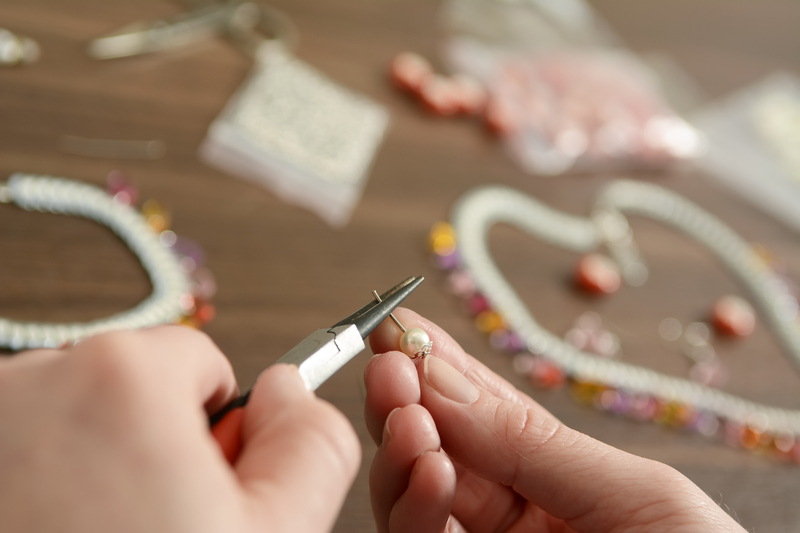What Not to Do When Disposing of Pots and Pans Responsibly
When your beloved kitchenware reaches the end of its lifespan, responsible pot and pan disposal becomes crucial. Yet, many of us make common mistakes, unintentionally harming the environment or missing opportunities to give those items new life. In this detailed guide, we'll explore what not to do when disposing of pots and pans responsibly and suggest better alternatives--so you can clear out your cupboards guilt-free and sustainably.
Understanding Responsible Disposal of Pots and Pans
As pots and pans disposal becomes a more frequent household task due to the rise in nonstick cookware and the allure of new technology, it's easy to see why many people overlook best practices. However, improper disposal methods can have a long-lasting negative impact on our environment, contribute to landfill overcrowding, and squander valuable materials.
Before you toss your old cookware, take a few moments to understand what you should not do--and why it matters.

Common Mistakes: What Not to Do When Disposing of Pots and Pans
1. Don't Throw Pots and Pans in Your Regular Trash
- Landfill Contribution: Pots and pans are often made from metals like aluminum, steel, and copper, all of which can take years to break down in a landfill.
- Missed Recycling Potential: These materials are highly recyclable. Tossing them with regular garbage denies them a second life in new products.
- Potential Harm: Older pots may have Teflon or other coatings that, when broken down, can leach chemicals into the environment.
Better idea: Always seek recycling options before turning to trash collection.
2. Don't Place Cookware in Curbside Bins Without Checking
- Most Municipal Programs Don't Accept: Standard recycling bins are typically for paper, plastic, and glass--most can't process large metal items or nonstick pans.
- Contamination: Including these in regular bins can contaminate the recycling stream, causing more good materials to be sent to the landfill.
Pro tip: Always check your local recycling program's accepted materials list.
3. Don't Forget to Remove Plastic or Wooden Handles
- Mixed Materials Issue: Many recycling centers require metals to be as pure as possible. Plastic or wooden handles create problems in the process.
Think ahead: Disassemble cookware as much as you can before recycling.
4. Don't Ignore the Possibility of Donation
- Gently used cookware: Many charity shops or shelters accept old pots and pans in decent condition.
- Sanitation: Pans simply needing a good cleaning should not be thrown away.
Never dispose of usable kitchenware without considering donation first.
5. Don't Burn or Incinerate Nonstick or Coated Cookware
- No Home Incineration: Burning Teflon or other coated pans releases harmful fumes.
- Health Concerns: The gases produced can be dangerous to both humans and pets.
Never attempt to dispose of nonstick cookware by burning it.
6. Don't Send Large Quantities to the Landfill
- Bulk Disposal Dilemma: Household cleanouts, commercial kitchens, and restaurants sometimes offload dozens of items at once, overwhelming local dumps.
Bulk recycling options or commercial scrap yards are your ally here.
7. Don't Overlook Specialized Recycling Events
- Eco-Events: Many communities run specialized take-back or electronics recycling days where metal kitchenware is happily accepted.
Neglecting these events means missing easy, responsible disposal options.
Why Responsible Pot and Pan Disposal Matters
Our choices have a direct impact on sustainability and resource conservation. Pots and pans disposal done wrongly fills landfills, wastes recyclable metals, and can expose communities to hazardous chemicals. Remember:
- Metal extraction is energy-intensive: Recycling requires less energy and creates less pollution.
- Nonstick coatings are persistent chemicals: If not handled properly, they can pollute soil and water.
How to Dispose of Pots and Pans Responsibly: What To Do
While this guide focuses on what not to do, let's quickly outline the best practices for disposing of cookware sustainably:
- Check for Local Recycling Programs: Some municipalities accept scrap metal or host special collection days.
- Drop at a Scrap Metal Yard: Most metal recycling facilities will take old pots and pans--even rusty or scratched ones.
- Sell or Donate: Thrift stores, shelters, or online 'Buy Nothing' groups often welcome functional cookware.
- Repurpose Creatively: Turn pans into planters, storage bins, or craft materials.
- Manufacturer Take-Back: Some cookware companies offer recycling programs for their products.
Responsible disposal isn't just about getting rid of the old--it's about making environmental stewardship part of our everyday lives.
Disposing of Pots and Pans With Special Considerations
Nonstick Cookware (Teflon and Similar)
- No curbside recycling: Most nonstick surfaces cannot be recycled in household bins.
- Remove handles and check with metal recyclers: Some facilities can handle the metal base if separated from the coating.
- Do not incinerate: As mentioned, burning releases toxic chemicals.
Cast Iron, Stainless Steel, and Uncoated Aluminum
- Highly recyclable: Scrap yards usually accept these materials with ease.
- Consider restoration: Many cast iron or steel pans can be rejuvenated with cleaning and seasoning.
Glass or Ceramic-Coated Cookware
- Challenging to recycle curbside: Most glass cookware is a different type of glass (pyrex or borosilicate) not compatible with standard recycling.
- Check for local disposal options: Specialty recycling centers or take-back days may accept them.
- Never smash and dispose: Broken glass poses a safety risk to sanitation workers and wildlife.
Pots and Pans With Plastic Components
- Dismantle where possible: Separate all metal from plastic or wood.
- Check for plastic recycling codes: Some parts may be recyclable, others not.
The Environmental Impact of Improper Pot and Pan Disposal
Irresponsible pots and pans disposal doesn't just clutter landfills:
- Wasted Materials: Aluminum, copper, and stainless steel take centuries to degrade, releasing toxins over time.
- Chemical Leaching: Coatings can break down and enter water systems, causing harm to wildlife.
- Resource Loss: Each pan you recycle saves natural resources and reduces the need for mining and processing.
Expert Tips: How to Find Responsible Pot and Pan Disposal Options Near You
- Check Your City Website: Many cities list recycling centers that accept metal goods or pots and pans specifically.
- Call Local Scrap Yards: Ask if they accept household pots and pans, and if coatings need to be removed first.
- Consult Store Recycling Programs: National retailers sometimes run trade-in or recycling services for kitchenware.
- Search for Donation Centers: Many non-profits or food banks need kitchen supplies for community programs.
- Attend Eco-Fairs: Earth Day or city sustainability events often feature recycling drop-offs for odd household items.
Creative Ways to Repurpose Old Pots and Pans
Before you part with your cookware, consider extending its life through creative repurposing:
- Planters: Drill drainage holes and use old pots for herbs or flowers.
- Organizers: Pans can corral small tools or office supplies.
- Wall Decor: Hang vintage pieces as rustic kitchen art.
- Craft Projects: Old pans can become clocks, chalkboards, or even bird feeders.
You may be surprised at the stylish and functional second life your cookware can enjoy!

Frequently Asked Questions About Pots and Pans Disposal
Can I put pots and pans in my household recycling bin?
Usually not. Household recycling programs often don't accept large metal goods, especially those with coatings or mixed materials. Check with your city's waste department first.
Is it worth donating scratched or stained cookware?
If the item is still functional--no warps, cracks, or excessive coating damage--charity shops or shelters may welcome it. Clean the item thoroughly and call ahead.
What about cookware with damaged nonstick surfaces?
Do not donate cookware with flaking coatings. Instead, remove the handle, and ask a scrap metal recycler if they can accept the base.
Can I recycle glass pots and pans?
Most municipalities don't accept Pyrex or glass cookware in curbside bins. Some specialty recyclers do; otherwise, donate if the item is in good shape.
How can I find recycling events or drop-off days?
Look on your local government's website, or check community forums and social media pages for Earth Day or city clean-up events.
Conclusion: Clear Out Cupboards Without Guilt
Responsibly disposing of pots and pans is about more than clearing space--it's about protecting our planet, supporting local charities, and reducing waste. By avoiding the pitfalls outlined above, you can ensure your old kitchenware goes on to enjoy a second life--or, at the very least, is processed in a way that benefits the environment.
Remember--never throw pots and pans in the regular trash, never burn coated cookware, and never miss an opportunity to recycle or repurpose. Your careful choices keep valuable materials out of landfills and support a more sustainable future!
Start your responsible cookware disposal journey today and inspire friends and family to do the same. Every pan counts!
